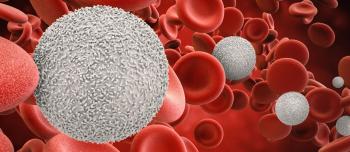In a case study presented at the Conference on Retroviruses and Opportunistic Infections (CROI) in Atlanta, GA, on March 4, 2013, investigators reported on a 26-month-old child from Mississippi with HIV who was functionally cured.
The child, born prematurely in July 2010 to a mother who didn't know she was infected with HIV, was treated with the antiretroviral drugs zidovudine, lamivudine and nevirapine starting 30 hours after birth and continuing for the next 18 months. After one month on the antiretroviral drugs, the baby's viral load was undetectable. Although the drug regimen was stopped at the mother's request when the child was 18 months old, the viral load is still undetectable some 10 months later. Investigators continue to monitor the case.
The case study, "Functional HIV Cure after Very Early ART of an Infected Infant," was presented by lead case analysts Deborah Persaud, MD, associate professor of infectious diseases at the Johns Hopkins Children's Center in Baltimore, and Katherine Luzuriaga, MD, professor of pediatrics and molecular medicine at the University of Massachusetts Medical School in Worcester. The research by these and other investigators working on the case was supported through funding from the National Institute of Allergy and Infectious Diseases (NIAID) and the Eunice Kennedy Shriver National Institute of Child Health and Human Development (NICHD), branches of the National Institutes of Health.
"Despite the fact that research has given us the tools to prevent mother-to-child transmission of HIV, many infants are unfortunately still born infected. With this case, it appears we may have not only a positive outcome for the particular child, but also a promising lead for additional research toward curing other children," said Anthony S. Fauci, MD, NIAID Director.
"This case suggests that providing antiretroviral therapy within the very first few days of life to infants infected with HIV through their mothers via pregnancy or delivery may prevent HIV from establishing a reservoir, or hiding place, in their bodies and, therefore, achieve a cure for those children," said Persaud.
Source: NIH News, March 3, 2013





